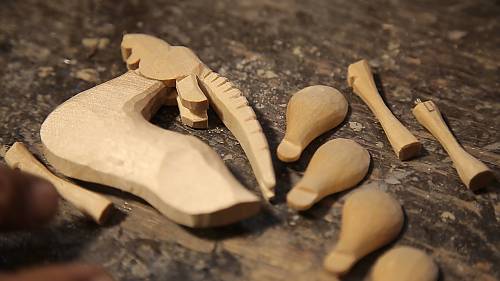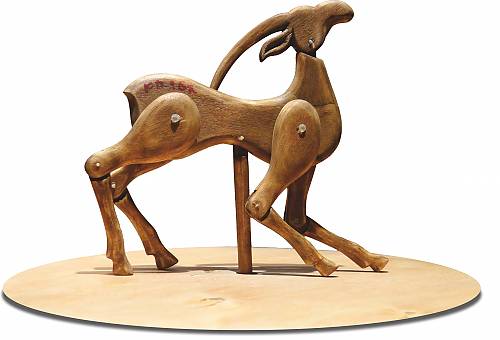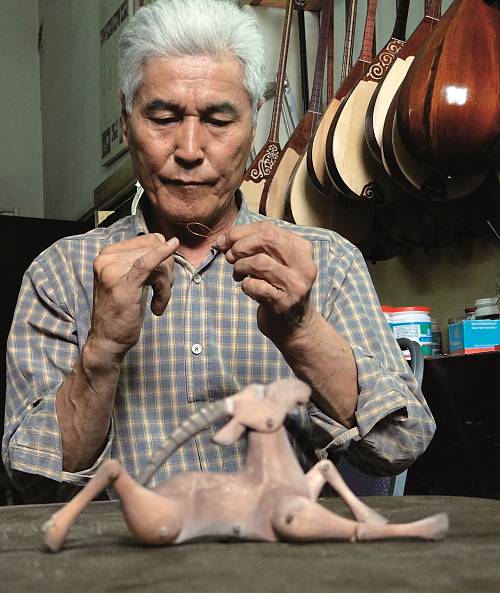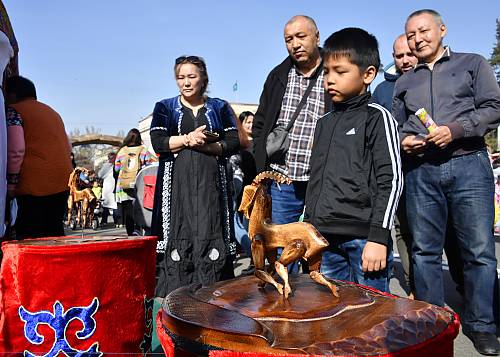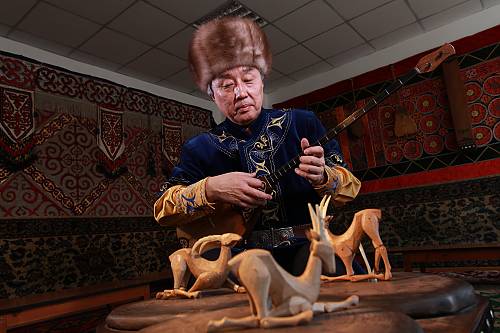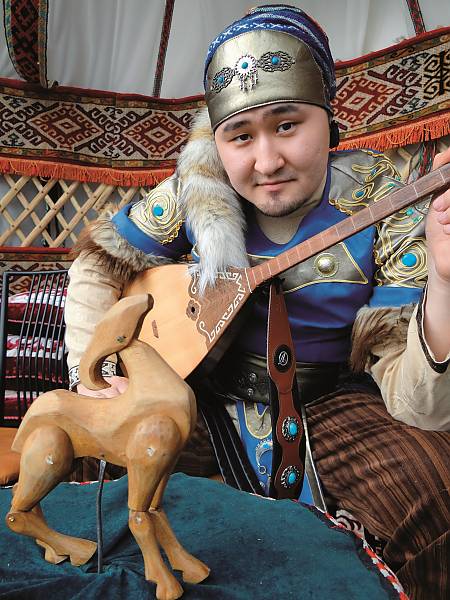Orteke, traditional performing art in Kazakhstan: dance, puppet and music
Inscribed in 2022 (17.COM) on the Representative List of the Intangible Cultural Heritage of Humanity
Orteke is an indigenous Kazakh performing art that combines theatre, music and puppetry. This folk art entails a music performance with a dombyra, a traditional two-stringed instrument, and a dance performed by a wooden puppet. Attached to the surface of a traditional drum with a metal rod, a wooden puppet in the shape of a mountain goat is connected to the fingers of a musician by one or several strings. As the musician strikes their fingers to play the dombyra, the puppet comes to life, hopping in sync with the music while tapping a rhythmic beat on the drum. Some experts can play with three or more puppets at a time. This performance, fascinating for its simplicity, is enjoyed by children and adults alike. It is primarily transmitted within communities and through apprenticeships, although the Kokil Musical College in Almaty has also established a team of researchers dedicated to the art. The biennial Orteke international festivals and regional puppet art competitions are other platforms for the learning and sharing of skills and experience between puppet artists from Kazakhstan and neighbouring countries. An important part of the region’s folk heritage and identity, Orteke also serves as a communication tool between adults and children.

